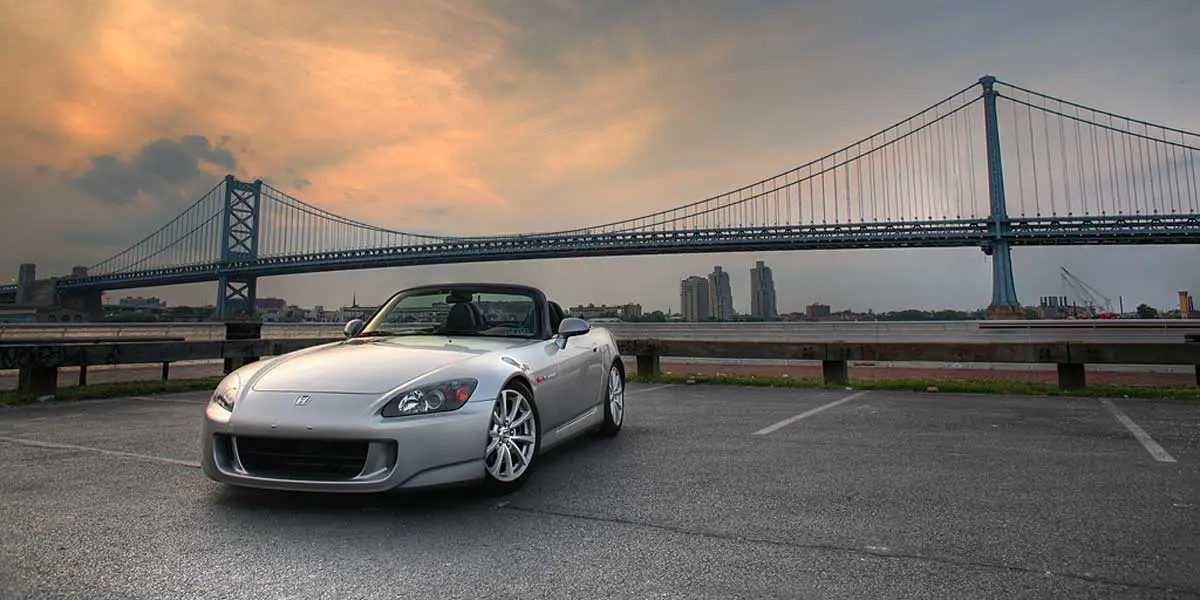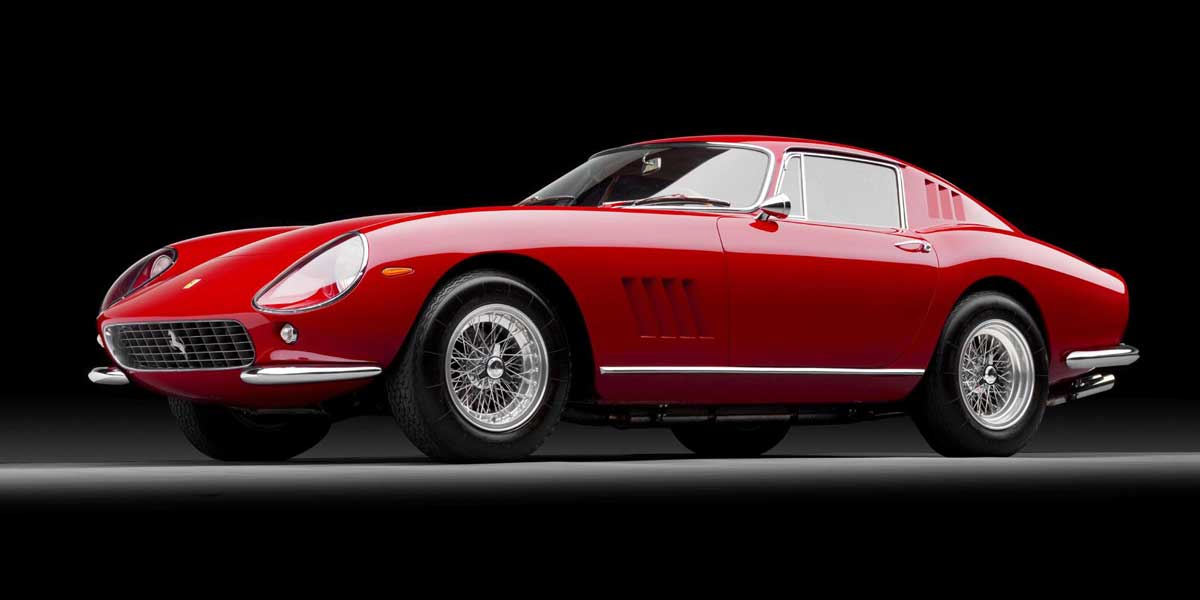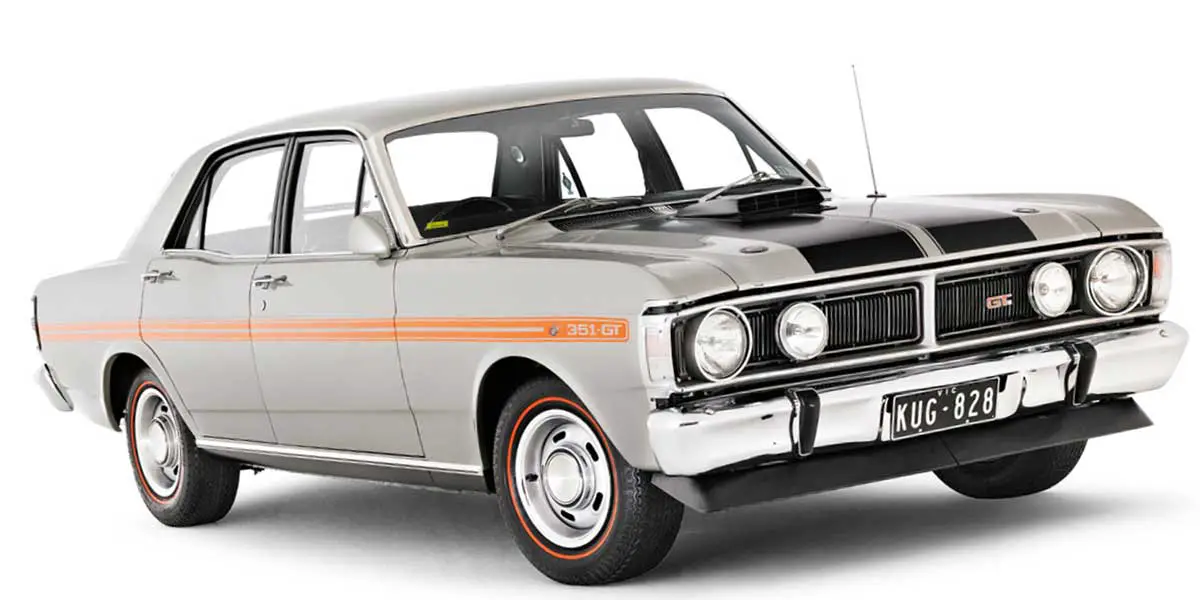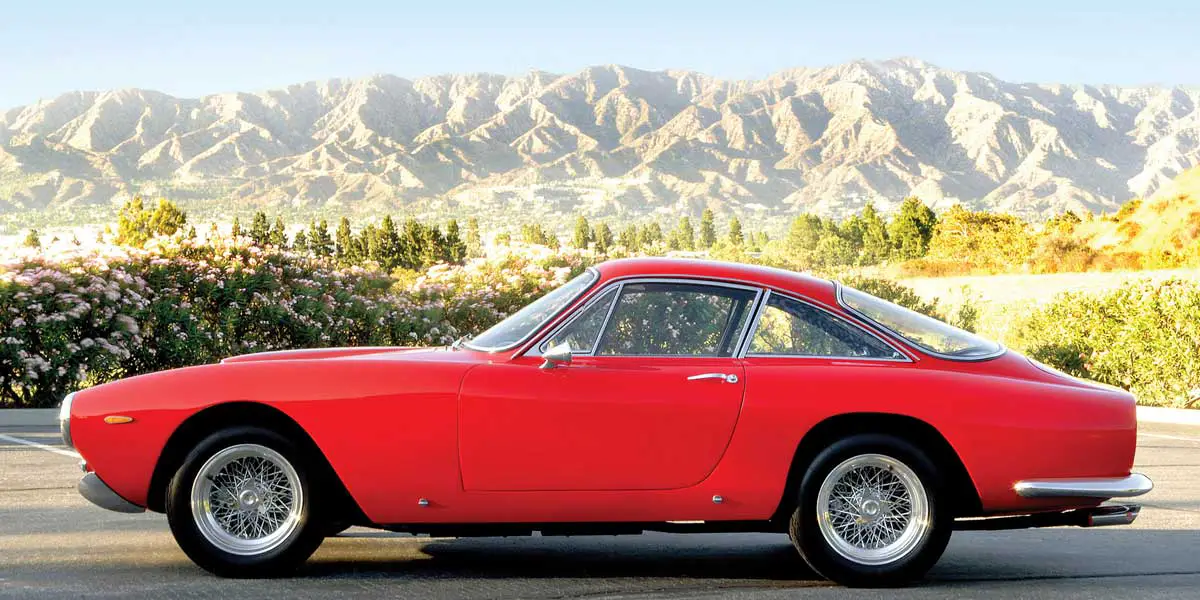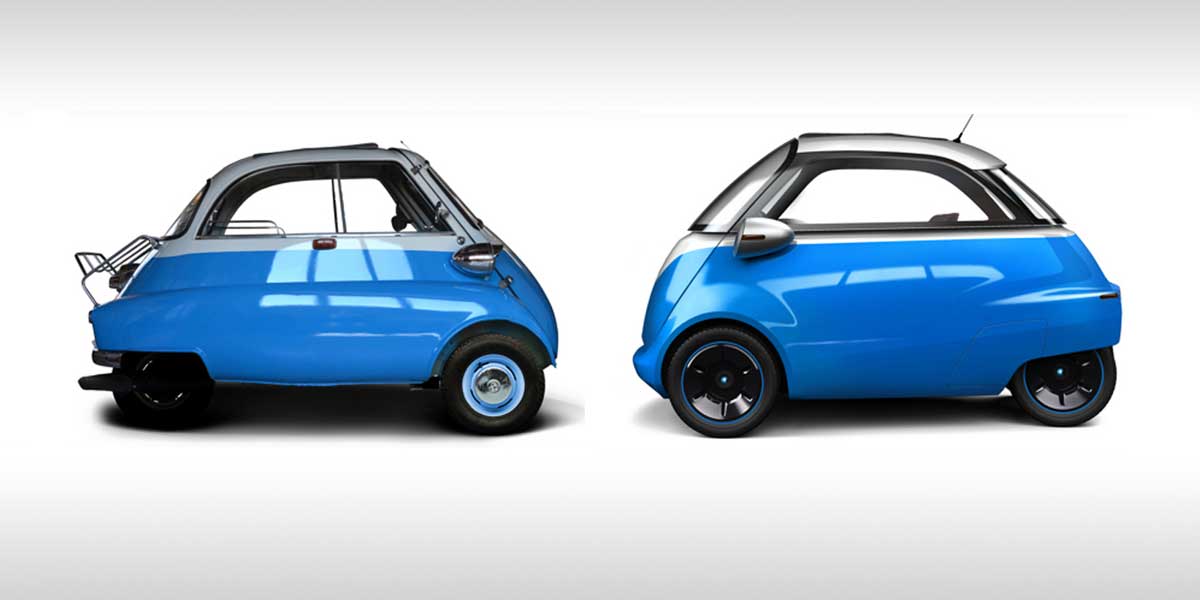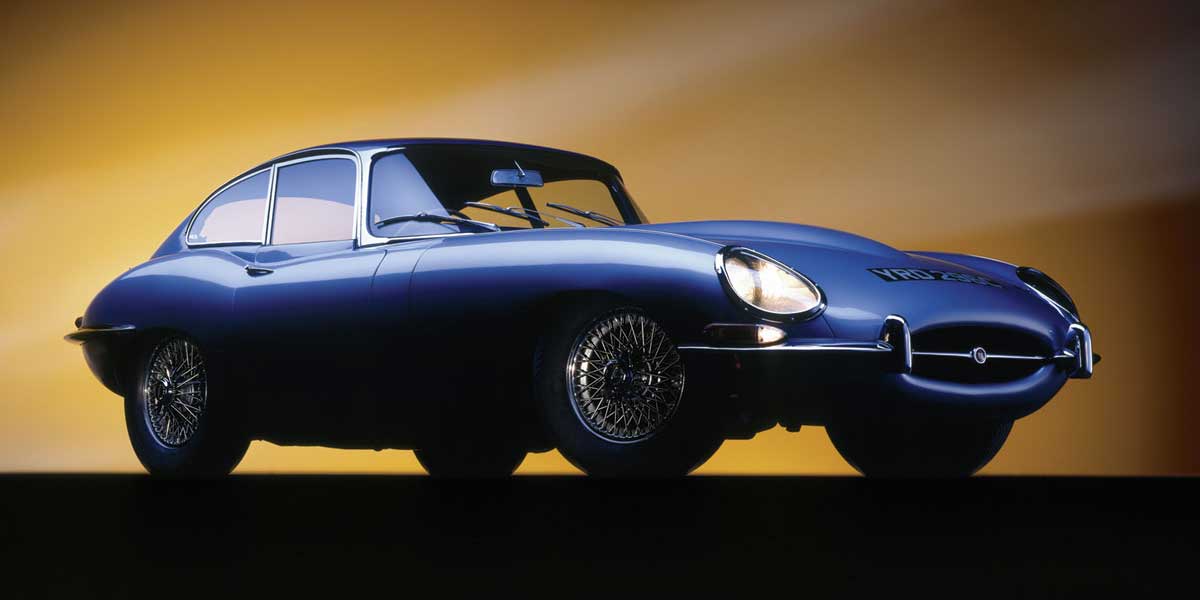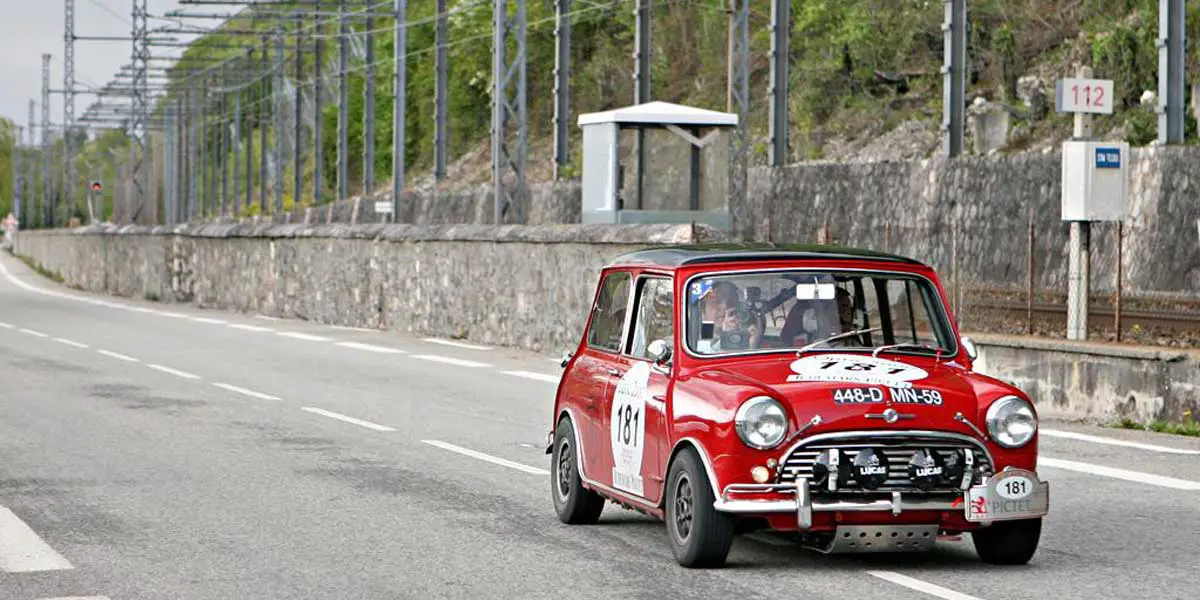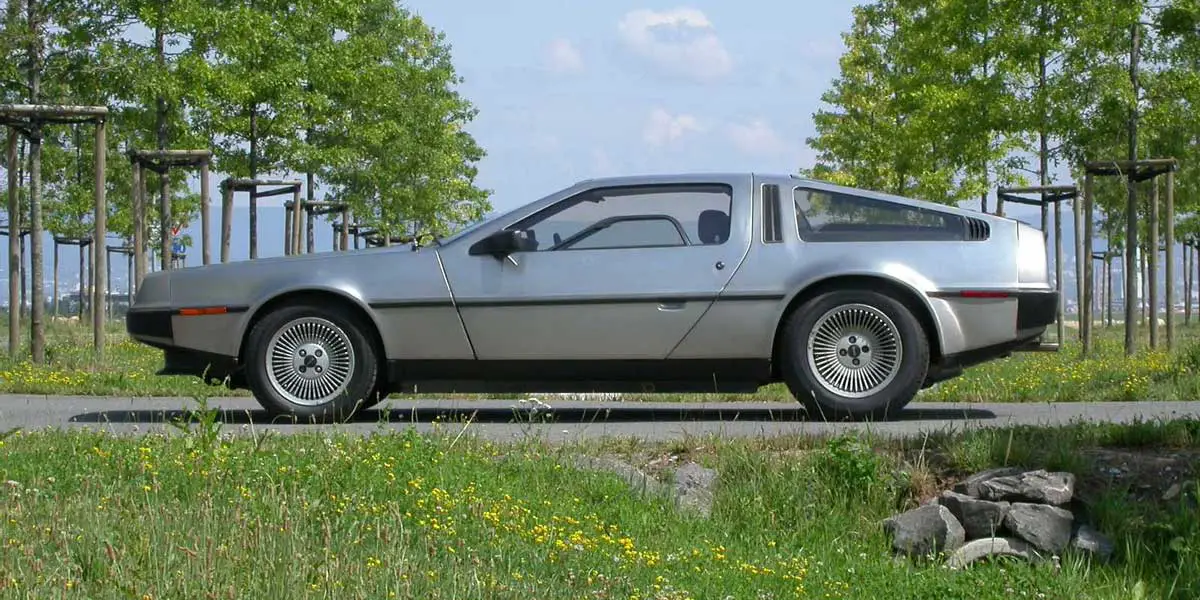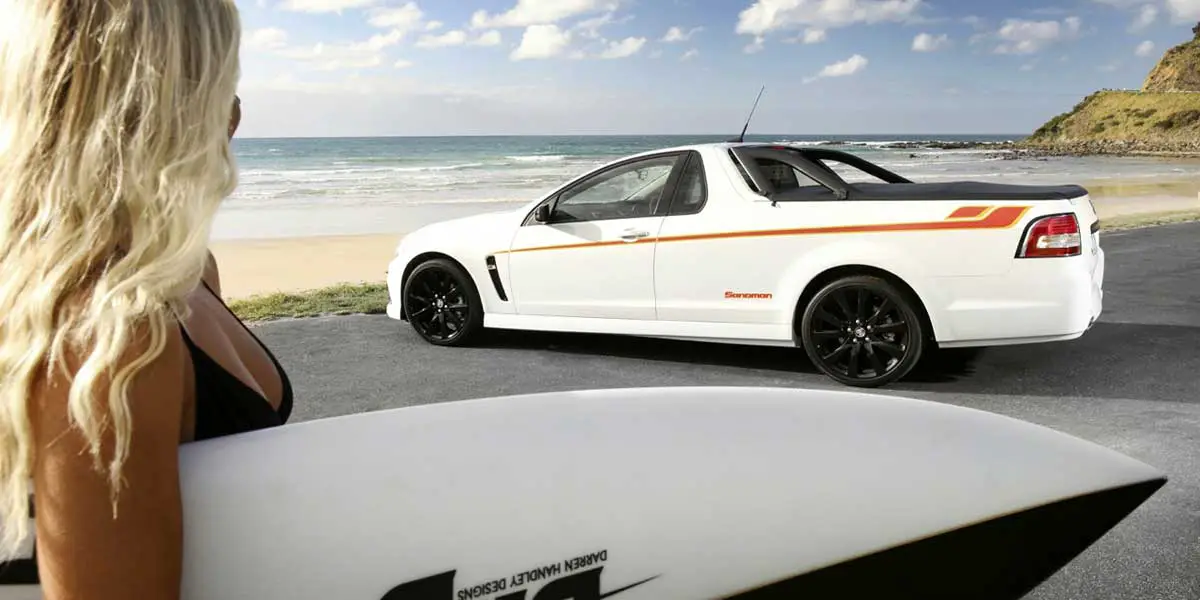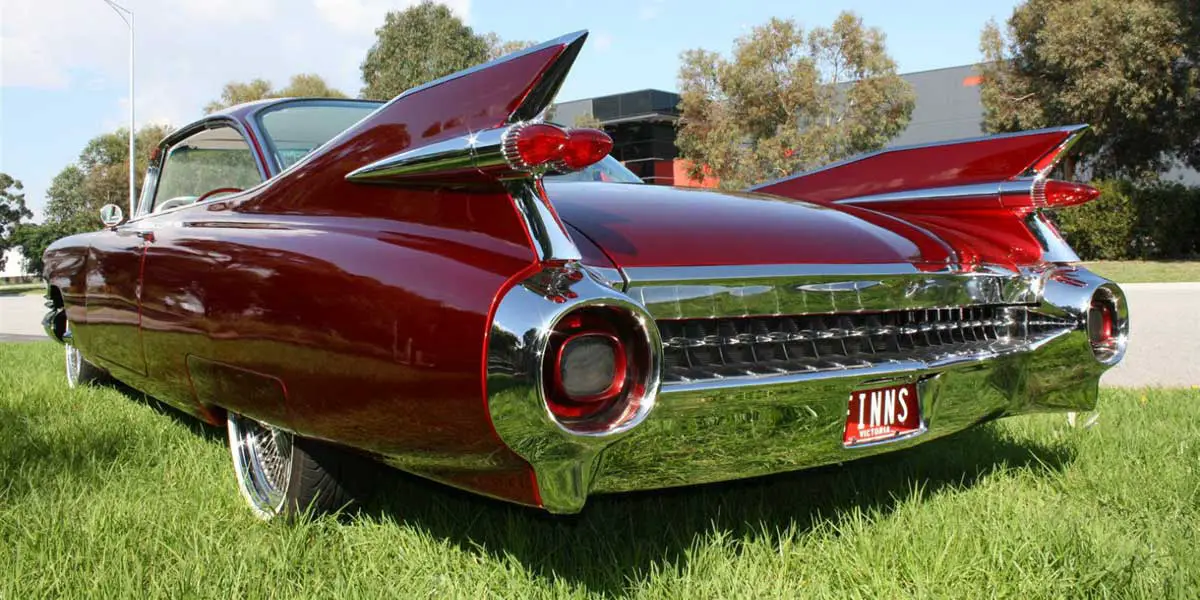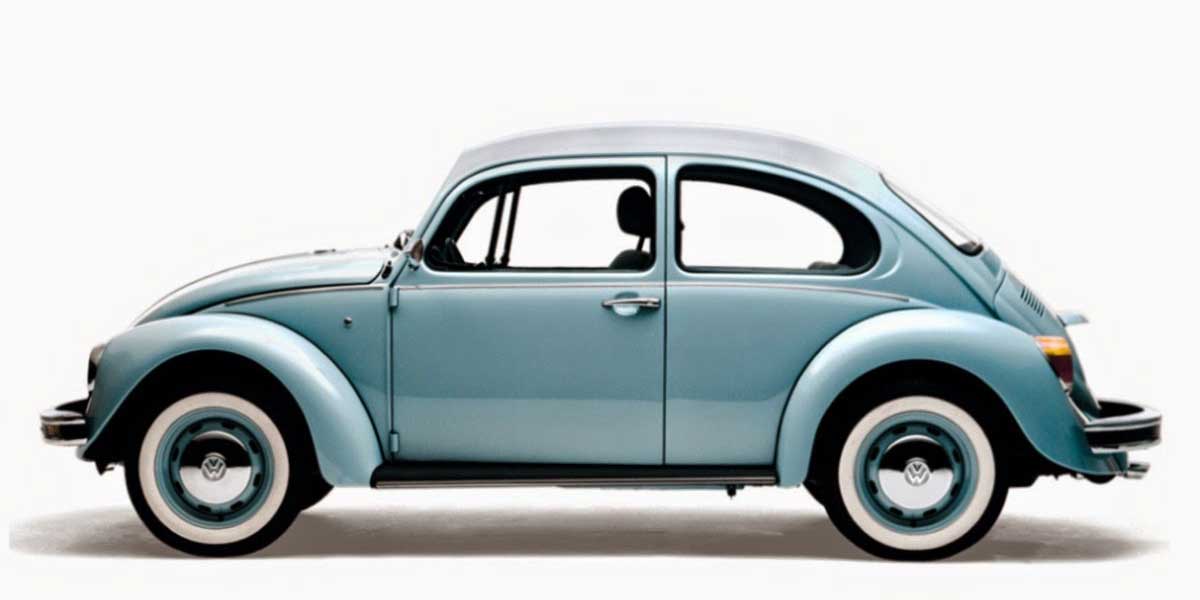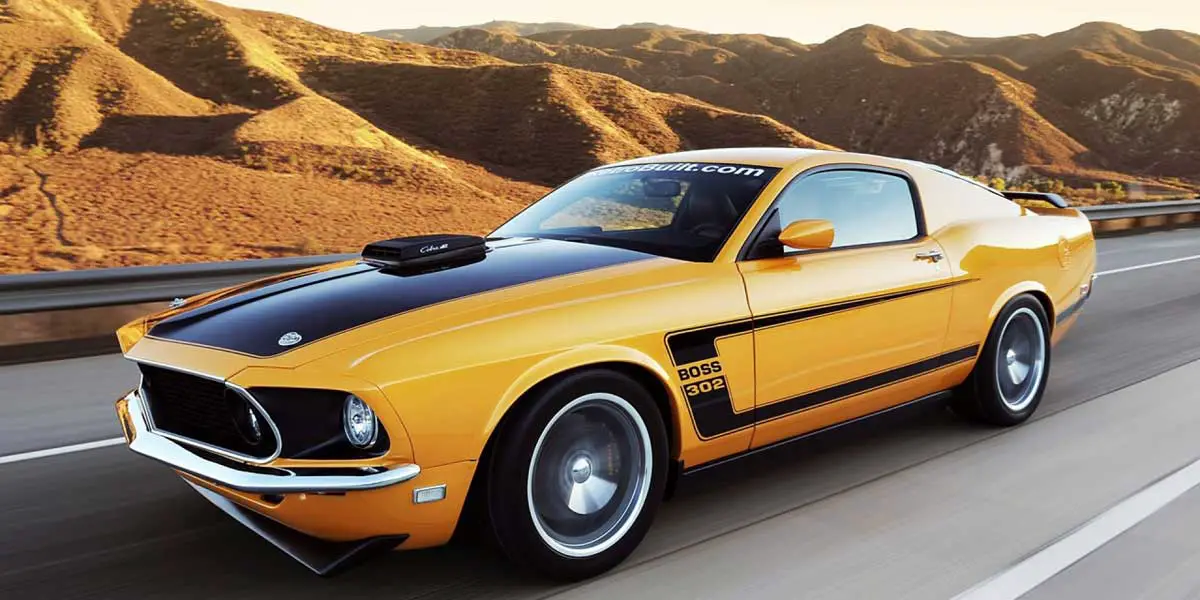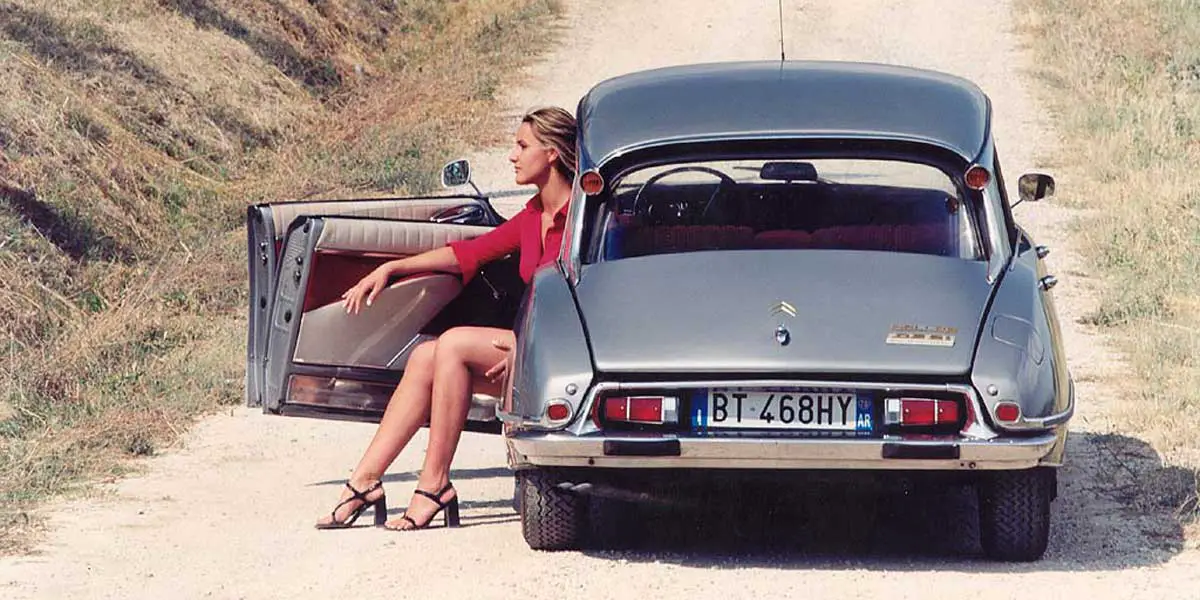






 Contact
Contact

Five Decades of Motoring in Australia – The 1990s

Home | Motoring in Australia | 1950s | 1960s | 1970s | 1980s | 1990s
In the 1980s, the MPV (Multi Purpose Vehicle) came into its own as a popular family vehicle, but by the 1990s, people movers began to lose their market share to four-wheel drives. The Range Rover had set new standards of luxury and passenger comfort for four-wheel drives which, up unto its arrival, had been very reliable but very basic transportation. The success of the Range Rover took everyone by surprise and it would take a few years for other manufacturers to design and build similarly equipped four-wheel drives of their own. The luxury 4WD was perfect for the 1990s which was very much a decade of consumerism and excess. Everything was bigger, and everyone wanted more more more. In that climate the luxury car market at all levels boomed.
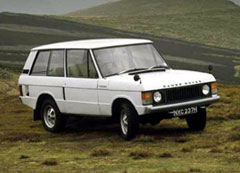
1992 Range Rover
Sales of the locally built flagships, the Ford Fairlane and Holden Statesman, skyrocketed and the luxury cars from Europe – Jaguar, Citroen, Mercedes Benz, BMW, Volvo, Saab and Audi – became objects of desirability. Even small cars were being sold with features as standard equipment that previously were only found in big cars – automatic transmissions, sunroofs, power steering, bucket seats, aid conditioning etc.
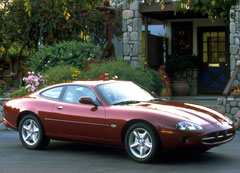
1998 Jaguar XK8
The 1990s saw very few cars that were totally new from the ground up being released, but that is not to say the motor vehicle industry stood still. The 1990s was a decade of major technical advancement in just about every area, a decade when great strides were achieved in motor vehicle safety. Computers became an essential part of a car’s electronics, improving fuel efficiency; new standards of technical sophistication were realised. Whereas the average life of a motor car manufactured in the 1960s was 10 years, by the 1990s, it had jumped to 15 years.
Falling sales and the falling Australian dollar in the late 1980s forced a number of European car manufacturers like Alfa Romeo and Renault to re-consider the viability of selling cars here, and decided to withdraw from the market. Their place would eventually be taken up at the economy end of the market by manufacturers like Kia, Hyundai, SsangYong Musso and Daiwoo from Korea, Proton from Malaysia, Suzuki from Japan and for a short time, Seat from Spain.
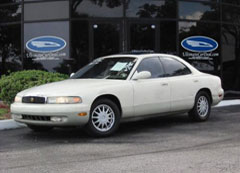
1994 Maxda 929
Financial difficulties at Mazda during the 1990s (partly caused by losses related to the 1997 Asian financial crisis) caused Ford to increase its stake to a 33.9 percent controlling interest on 31 March 1999. Ford executive Mark Fields, who took over as Mazda’s CEO at that time, has been credited with Mazda’s turnaround during the early 2000s. The company’s range during the 1990s consisted for three models – the sub-compact 323, the compact 626 and the larger 929, which appeared in its 4th generation guise in 1990.
The name Lexus is said to be short for "Luxury Export to the US market", and clearly identified the target market to which the car was created by Japanese car mamufacturer, Toyota. In Australia, as in other markets, the first Lexus, the LS 400 (released in Australia in 1990), went head to head with the BMW 5 and 7-Series and Mercedes-Benz S-Class.
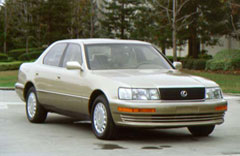
Lexus LS 400
Lexus soon developed a reputation for luxury and reliability, along with quality customer service, and by the turn of the 21st century, the marque had achieved Toyota’s goal when it became the highest-selling brand of luxury cars in the US. In the late 1980s, Mazda followed Toyota’s lead and launched its own luxury brand, Eunos. This experiment did not enjoy the success of the Lexus and the Eunos was quietly discontinued in the mid-1990s.
Nissan’s Micra was the smallest car in the company’s range. It was launched in 1982 in its homeland of Japan, but its wasn’t until the release of the extensively improved second-generation K11-model Micra in 1992 was built that the car would be released in other markets, like Europe and Austtralia. The Micra extended Nissan’s sedan car range, that up until that time consisted of two models – the medium sized Pulsar and the larger Pintara, the latter being marketed as the Nissan Bluebird elsewhere.
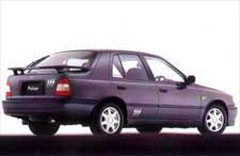
Nissan Pulsar
A locally designed five-door ‘Sportshatch’ (exported back to Japan, and to New Zealand as a Bluebird) was sold in Australia. The model was discontinued in mid-1992 when Nissan Australia ceased local production. Ford Australia marketed a rebadged version of the U12 Pintara sedan and hatchback as the Ford Corsair. In 1990, the Nissan Pulsar N14 model finally saw Nissan conform to the rounded look. A re-badged version of the earlier model had been marketed as the Holden Astra, but there was no Holden equivalent of the N14. The N14 series also saw the introduction of the Nissan Pulsar GTI-R. Around that time, the old Prince name, Skyline, was revived and given to a new 2-door sports coupe.
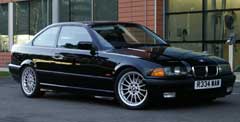
1998 BMW 328i
BMW launched a new 3 Series in the same year, which looked set for dominance of the compact executive market thanks to its sleek looks, excellent quality and driver appeal. Even the basic 1.9 petrol engine gave impressive performance, with the range topping 2.5 unit one of the best powerhouses ever found under the bonnet of a BMW. Equipment levels were generally good, but it was disappointing to note that some of the cheaper models had a radio and sunroof as only optional extras.
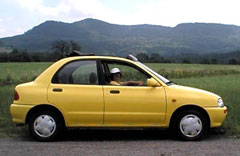
Mazda 121
The Mazda 121, the smallest car in Mazda current range, was released in Australia in 1991. Dubbed the Noddy car because of its novel rounded shape which maximised interior space, it was very popular. It was replaced by the much more mundane and far less popular Mazda Metro in 1996.
Honda launched an all-new version of its iconic Civic family car in 1992. The new range included a three-door hatchback and four-door saloon. A new Accord arrived a year later. Audi facelifted its impressive but ageing 80 and 100 ranges to ensure that the likes of BMW and Mercedes-Benz still had excellent competitors. Its new models, the 80 and 90 series, brought the marque to the forefront in Australia and established the enviable reputation it enjoys today.
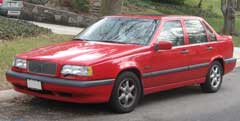
Volvo 850
In 1992, production of the long-running 740/760 and 240/260 ranges ceased at Volvo, as the all-new 850 range of saloons and estates went on sale. The new range, all with five-cylinder engines, was designed to compete with the likes of the BMW 5 Series and Mercedes-Benz E-Class.
In 1993, Mercedes-Benz pulled the plug on ten years of 190E production and launched an all-new competitor for the BMW 3 Series. The C-Class wass a four-door compact executive saloon with classy styling inside and out. It was slightly more expensive that most similar-sized cars, but its premium price is justified by high levels of equipment, refinement and quality.
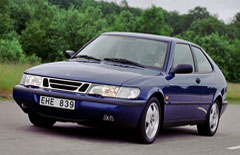
Saab 900
Saab launched an all-new version of its hugely popular 900 range, 14 years after the original version was launched. The new Saab 900 used the same chassis as the current Vauxhall Cavalier/Opel Vectra, built by Saab new parent company, GM, but was a far more distinctively-styled car. SEAT, the Spanish subsidisary of Volkswagen, introduced an all-new version of the Ibiza supermini, which sold in Australia for a few years.
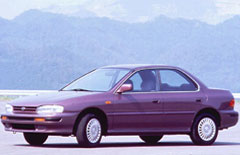
Subaru Impresa
In the 1990’s, Subaru moved away from small commercial vehicles and concentrated on the development of mainstream passenger car models, and when Subaru introduced the Legacy in 1989, it was well received. The Legacy was considered mainstream in its appearance and a departure from previous vehicles, which had earned a reputation of being "quirky". It was perceived by some as Subaru’s attempt to compete with new luxury brands Lexus, Infiniti and Acura, as Japanese vehicles were increasing in popularity, particularly in the USA. Subaru continued their new direction with the controversially styled six-cylinder SVX (1992), and the Impreza (1993).
In 1994, Audi canned the historic 80 nameplate after 22 years for the launch of an entirely new compact executive saloon – the A4. This would later by supplemented by the bigger A6 and small A3 some years alter. Volkswagen launched an all-new Polo, 13 years after the second generation version went on sale.
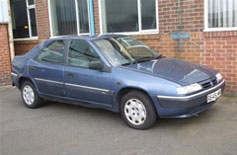
Citroen Xantia
Over at Citroen, the big news was the Xantia, a relatively ordinary looking car (by Citroen’s standards) that replaced the BX. It would be the last of Citroen’s ‘quirky’, unconventional mid-range cars. Mazda released its all-new five door hatchback and four door sedan, the Mazda 323 Astina, in 1994. They were built on platforms distinct from the Mazda 323 from which they had been developed. The bodyshape was designed by former Porsche designers. The first Subaru WRX arrived in 1994. It debuted with little fanfare, but quickly established a following, particularly from motoring publications who appreciated its performance and value equation. What started life as a quirky, niche performance car based on a modest-selling small car evolved into a cult car with a colourful history.
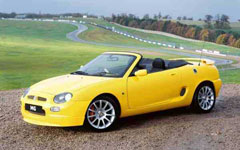
MGF
The biggest news of 1995 was that Rover would launch a new MGF sports car, which signalled the "real" rebirth of the MG marque since the closure of the Abingdon factory and end of MGB production in 1980. Ford gave its six-year-old Fiesta a significant facelift to keep it on even terms with the ever-growing number of new rivals.
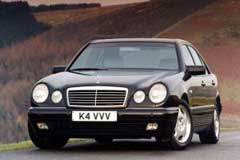
1995 Mercedes-Benz E-Class
Mercedes-Benz launched an all-new E-Class in 1995 with distinctive bug-eyed front headlights which came as a shock to many observers and potential customers. Though very different from its long-running predecessor, the new E-Class maintained the strong Mercedes traditions of quality, comfort, refinement and luxury – but at a slight premium over rival products. In 1995, the N15 Nissan Pulsar was launched. In Australia, it was sold as a 5-door hatchback and four door sedan only. The Australian versions included the LX, SLX, Q and SSS. The SSS model (hatch only) featured the SR20DE engine featuring 105?kW (141 hp)/179 Nm.Honda Prelude coupe.
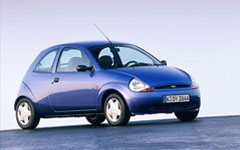
Ford Ka
In 1996, Ford made its first entry into the city car market with the Fiesta-based Ka, a controversially-styled three-door hatchback powered by the company’s long-running 1.3 litre "Endura E" petrol engine. Jaguar called time on XJS production after 21 years and replaced it with the all-new XK8. Volkswagen launched the latest version of its Passat family car in an all-new format, nine years after the previous generation Passat was launched. BMW replaced the 5 Series medium sized executive car with an all-new model after nine years. The new 5 Series was visually similar to its predecessor, but was in reality an all-new car.
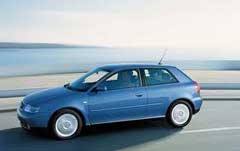
Audi A3
Audi moved downmarket with the launch of its new A3. The three-door hatchback was the first car to be launched on a new platform that would spawn the next generation Volkswagen Golf. Honda launched an all-new version of its Prelude sporting coupe. A less dramatic-looking creation than its predecessor, it was designed as a direct competitor for the likes of the Toyota Celica.
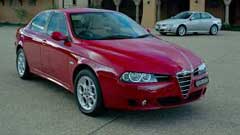
Alfa Romeo 156
The European Car of the Year award for 1998 went to the Alfa Romeo 156, the car with which Alfa returned to the Australian market after a number of years of absence. It was a sporty-looking four-door saloon aimed directly at the class-leading likes of the BMW 3 Series and Audi A4.
Citroen released an all-new car – the Xsara. The Xsara was a conventionally-styled hatchback which offered very little to set the pulse racing, but had plenty of appeal for customers who have less interest in cars. The Xzara and the larger Xantia would head the Citroen range in Australia until the release of the larger C5 range in 2001.
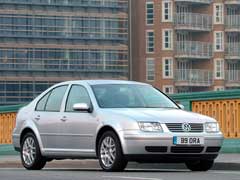
1996 Volkswagen Bora
The Volkswagen Golf entered its fourth generation in the most upmarket form seen yet. It had the look of its predecessor, but in reality was an all-new car. A saloon version – the Bora – was seen as more of a car in its own right than the "Golf-with-a-boot" image that always let down the Golf-based Jetta.
Audi canned the 100 nameplate and replaced it with the nametag A6. Designed as a direct competitor for the BMW 5 Series, the A6 was a stylish, comfortable, solid and refined saloon range looked just the part to complete the recent turnaround at Audi which had seen its desirability surge and become at least a match for its key rivals from Mercedes-Benz and BMW. Mercedes-Benz hit the headlines with two innovative new models.
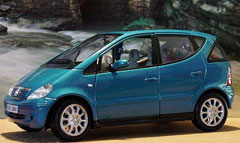
Mercedes Benz A-Class
The first was the A-Class, its first front-wheel drive car. But the most significant thing about the German marque’s new entry-level model was its clever one-cube design which allows plenty of interior space thanks to its high roof on a chassis the size of a mini-cars.
The other addition to the Mercedes range was the SLK – a two-seater sports car with a folding convertible-style steel roof and a supercharged 2.3 litre engine capable of 150mph. It is designed as a direct competitor to two new rival sports cars that had recently come from Germany – the Porsche Boxster and BMW Z3. Two of Japan’s most famous nameplates – Honda’s Accord and Toyota’s Corolla – were updated for 1998. Neither model was particularly exciting or distinctive, but they both perpetuated their long-standing reputations for excellent build quality and reliability.
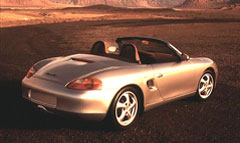
Porsche Boxster
With interest in retro-styled cars booming worldwide, Volkswagen hit out by launching an entirely new version of its classic Volkswagen Beetle in 1999. Toyota has scored a huge success with its new Yaris supermini. Replacing the long-running Starlet, the rather ugly small hatchback had a clever high-roof design that maximed interior space. The front of the Yaris is exceptionally spacious for such a small car, while rear seat space can be altered via a sliding rear bench.
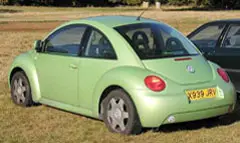
Volkswagen Beetle
General Motors Holden changed throughout the 1990s, increasing its Australian market share from 21 percent in 1991 to 28.2 percent in 1999. Besides manufacturing Australia’s bestselling car, which was exported in significant numbers, Holden continued to export many locally produced engines to power cars made elsewhere. In this decade, Holden adopted a strategy of importing cars it needed to offer a full range of competitive vehicles.
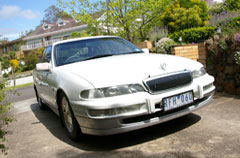
Holden VS Caprice
Holden re-introduced its defunct Statesman name in 1990, this time under the Holden marque, as the Statesman and Caprice. For 1991, Holden updated the Statesman and Caprice with a range of improvements, including the introduction of four-wheel anti-lock brakes, although a rear-wheel system had been standard on the Statesman Caprice from March 1976. This feature was added to short-wheelbase Commodore range in 1992. Another returning variant was the full-size utility, this time based on the Commodore. The VN Commodore received a major facelift in 1993 with the VR. Compared to the VN, approximately 80?percent of car was new. Exterior changes brought an overall smoother body and a "twin-kidney" grille, a Commodore styling trait which remained until the 2002 VY model.
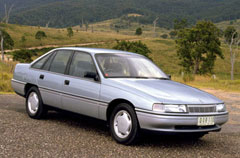
VN Commodore
Holden introduced the all-new VT Commodore in 1997, the outcome of an AU$600 million development programme that spanned more than half a decade. The new model sported a rounded exterior body shell, improved dynamics, and many firsts for an Australian-built car. A stronger body structure increased crash safety.
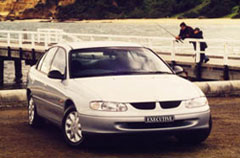
VT Commodore
Holden’s UAAI badge-engineered cars first introduced in the 1980s sold poorly, but the Holden Commodore, Toyota Camry, and Corolla were all successful when sold under their original nameplates. UAAI was dissolved in 1996, and Holden returned selling to GM products. This signalled the closure of the Dandenong, Victoria facility, the sole plant for Corolla and Nova production.
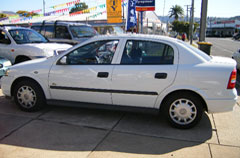
1997 Holden Astra
The Holden Astra and Vectra, both designed by Opel in Germany, replaced the Toyota-sourced Holden Nova and Apollo. This came after the 1994 introduction of the Opel Corsa replacing the already available Suzuki Swift as the source for the Holden Barina. Assembly of the Vectra began at Elizabeth, South Australia, in 1998, and these cars were exported to Japan and Southeast Asia with Opel badges. However, the Vectra did not achieve sufficient sales in Australia to justify local assembly, and reverted to being fully imported in 2000.
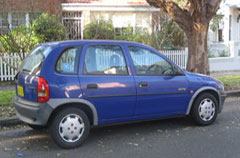
1995 Holden Barina Swift
As a result of an AU$700 million development the Ford EA Falcon, introduced in 1988, bore a passing resemblance to the European Ford Scorpio. However under the skin, it remained an entirely Australian design, and is credited as the first Falcon model to employ wind tunnel testing. The EA was also only produced in sedan and station wagon body styles, with the previous-model (XF) utility and panel van continuing in production. While initially popular, the EA ultimately proved unreliable (like the VN Commodore released after it), and corporate competitiveness proved to be the downfall. From the start the EA possessed all the trademarks of a car released onto the market too early: uneven panel shutlines, computer problems, poor paint quality and front suspension alignment problems.
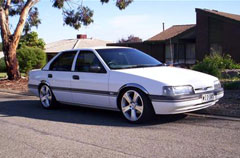
1991 Ford EB Falcon
Visually the 1991 Ford EB Falcon remained nearly identical to its predecessor. The most noticeable change was the transfer of the Ford emblem from the tip of the bonnet to the grille. The return of the V8 engine was welcomed by the motoring press, however the 5.0 litre Windsor unit did not reappear in the utility variants until the "EF-shaped" XH series of 1997.
The Ford ED Falcon came in response to Holden’s new VR Commodore in 1993. The front grille was now elliptical to differentiate it from the EB, and the sports genre (XR6, and XR8) gained an exclusive quad headlamp cluster. Making a comeback in the ED range was the Futura.
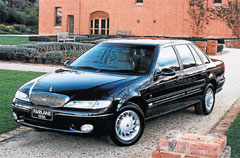
1995 Ford Fairlane
When the Ford EF Falcon was introduced in August 1994, it brought with it a new curvaceous body shape, sharing only the front and rear doors with the EA-ED series, but with a new door handle design. Unlike the sedan, the station wagon inherited the rear styling of the ED series. With the new model, came a thoroughly redesigned interior. The final E-series model, the Ford EL Falcon, was merely a facelift of the EF intended to keep sales strong until the sixth generation AU falcon was launched.
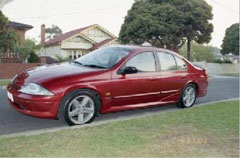
1998 Ford AU Falcon
The radically redesigned Ford AU Falcon was released in 1998. Initially, the company looked at various other Ford products such as the Ford Taurus, Mazda 929, and the European Scorpio as replacements for the Falcon. After serious evaluation, Ford Australia decided to continue with the Falcon, partly because of the investment required and the effect on local employment. Developed under the code name "EA169", AU adopted Ford’s New Edge styling, which was meant to differentiate it from the "conformist" styling prevalent in the 1990s. The gamble, which had worked with the Ford Focus, did not endear the AU Falcon to its buyers. Ford attempted to address the AUs in its Series II (April 2000) and Series III (November 2001) updates, which brought minor styling changes, such as the abolition of the unpopular "waterfall" shaped grille on the base model Forte. The AU failed to meet initial sales targets, repeatedly being outsold by its chief rival, the Holden VT Commodore.
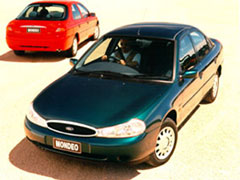
1997 Ford Mondeo
In 1989 the Ford Telstar sedan was replaced by the locally assembled Nissan-based Ford Corsair. When Nissan shut down its Australian manufacturing operations in 1992 the imported Telstar resumed its former position. In 1995 the Telstar was dropped in favour of the Mondeo, imported from Belgium. Ford Australia dropped the Mondeo in 2001, arguing at the time that the segment of the market in which it competed was in decline, but 2007, it announced that it would introduce the new Mk IV model in Australia.
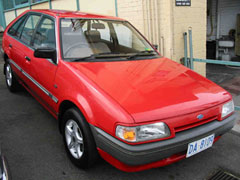
1990 Ford Laser
The Ford Laser, based on the Mazda 323 and sold against thar car in the marketplace, had been produced in Ford’s plant at Homebush in Sydney since 1981. In September 1994 the plant’s closed and all Lasers sold in Australia were fully imported from Japan. The Laser was replaced by the European Ford Focus in 2002.
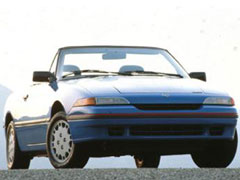
1993 Ford Capri
Ford Australia had manufactured the European designed Mark 1 Capri at its plant in the Sydney suburb of Homebush from 1969 until 1972. The Ford Capri name was revived in Australia in 1989. A new Australian-designed Capri, codenamed the SA30, was a convertible designed to rival the Mazda MX-5. Ironically, it used Mazda 323 engines and mechanicals which Ford Australia had adopted as the basis of the Laser. It had a bodyshell designed by Ghia and an interior by ItalDesign. Two models were originally offered: a standard 1.6?L model, and a turbocharged variant, with 136?PS (100?kW). The Australian-built Capri was intended primarily for export to the US. Exports began in 1991, as the Mercury Capri, and sales briefly exceeded those of the MX-5, but then dropped rapidly, so production ceased in 1994. The car was plagued by quality problems and recalls, although it eventually had success in the early 1990s with models modified by Tickford.
Mitsubishi’s flagship car in the 1990s was the Magna. Built at its Tonsley Park plant in Adelaide, the Magna, like its forebear, the Sigma (1877-1985) was based on the Galant. This time, input from MMAL resulted in a wider car than the donor model a station wagon joined the line in 1987.
Several model refreshes during the 1990s kept the Magna, which had expanded to include the luxury and Verada updated. However, by the early 2000s, it was clear that the Magna/Verada line, now in its third iteration had aged considerably. A facelift to the Magna/Verada line in 2003 failed to lift sales. Approval for construction of a new vehicle was gained from MMC and funding was provided to re-engineer the Tonsley Park plant with the result that a new vehicle, the Mitsubishi 380, which was delivered to the market in late 2005.
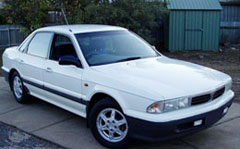
1992 Mitsubishi Magna
The Magna was reengineered from the ground-up in 1991, with the introduction of a sedan and wagon version based on the Japanese Mitsubishi Diamante and Sigma hardtop. This range was larger, more strongly built and had more power than its previous version. Unlike the Japanese model on which it was based, this Magna featured B-pillars, more conventional suspension designs and less electronics. Nevertheless, the Australian-made TR Magna range was designed to be exported and the build quality reflected this engineering intent. This body shape was replaced by the all new TE series in 1996 although TS wagon stocks continued into 1997 until the new TE wagon was ready for launch. Famously, to demonstrate that the MMAL was able to build high quality products, a wagon model was flown to Japan, planting the seed for world exports of the Australian-made Magna range.
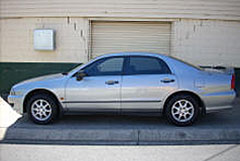
1999 Mitsubishi Magna
In 1996, Mitsubishi released a third-generation Magna, the TE series (codenamed YR) broadly based on the pillarless Japanese Diamante. A 2.4L four-cylinder (codenamed 4G64-S4 and with 90% new parts to its related engine fitted on the second generation Magna) and a 3.0 L V6 were initially available, while a 3.5 L V6 was offered in the upscale Verada (many of which were exported as the Diamante to Japan, the US, and other markets). The four-cylinder Magna was dropped in March 1999, in time for the TH facelift when the 3.0-litre V6 became standard and the Verada’s 3.5-litre engine became a Magna option. The four-cylinder engine for the Magna was dropped at the end of 1998 due to slow sales and growing consumer preferences for larger more powerful engines. The Magna/Verada was again Wheels Car of the Year for 1996.
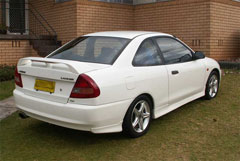
1997 Mitsubishi Lancer
The only other sedan sold by Mitsubishi during the decade was the fully imported 4-cylinder Lancer, a direct descendant of the Colt and Galant of previous decades that had successfully pioneered the Mitsubishi brand name in Australia. In Australia, the fifth generation Lancer, commonly referred to as the CC series, was available from 1992-1996. It was sold as a 2-door coupe, as well as a 4-door sedan, wagon and 5-door hatchback (essentially carried over from the previous generation). The GL trim model was the last Lancer to use a carburetor engine. The rest of the range used an EFI engine. In 1996, when it was replaced by the popular CE series model. Like the previous generation, it was available in a variety of body styles, which helped to cater for a more broad audience. The introduction of a sporty MR coupe helped to target this model directly towards a younger audience. The CE series stayed in production until 2004.
The longest-running Toyota Corona model was the rear-wheel drive seventh-generation (T142) model, which began production in 1981 and was manufactured locally by Toyota Australia until 1987, even though by that time a front-wheel drive version (originally called the Toyota Corona FF and marketed in some countries as the Toyota Carina) had already been released elsewhere. The Corona was eventually dropped in Australia in favour of the larger Camry, but in New Zealand Toyota continued to offer versions of the Corona, assembled locally at Toyota’s plant in Thames, New Zealand.
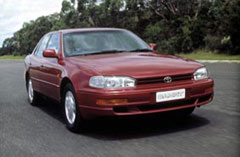
1993 Toyota Camry
The Camry replaced the Corona on the Port Melbourne assembly line, and continued to be built there until 1994 when Toyota’s vehicle production was transferred to the company’s new $420 million facility at Altona. In 1988, Holden entered a new alliance with Toyota. The joint venture formed a new company: United Australian Automobile Industries (UAAI). Under the alliance, Holden began selling rebadged versions of Toyota’s Corolla and Camry, as the Holden Nova and Apollo, while Toyota sold the VN Commodore as the Toyota Lexcen until 1992. In 1995, UAAI was dissolved.
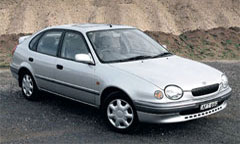
1996 Toyota Corolla
The eighth generation Toyota Corolla (AE10/EE10), released in 1996, was larger, heavier, and visually more aerodynamic than the model it replaced, with development chief Dr. Akihiko Saito wanting to develop a ‘mini-Lexus’, after success with that range’s flagship. With its 2465 mm wheelbase, the Corolla had moved into the compact size class once occupied by the Toyota Corona and Toyota Camry.
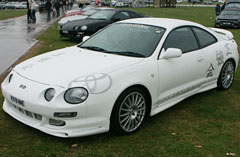
1998 Toyota Celica
The Corolla was offered in a variety of specifications under the names Levin, Ultima and Conquest, but all were in 4-doors, including a station wagon. In Australia, the fastback version was sold as the Seca. This generation Corolla received a facelift in 1999, featuring a different nose (the previous round headlights proved unpopular, so it was replaced with twin smaller headlights under a single cover on either side), and the new ZZ series engines with VVT-i replacing the old A series engines. The ninth-generation Corolla (NZE120/ZZE120) appeared in August 2001 with edgier styling and a longer 2600 mm wheelbase.
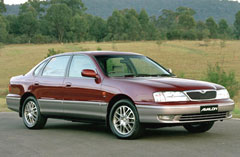
Toyota Avalon
First seen in the US in 1994, the Avalon filled the gap left by the cancellation of the Toyota Cressida. The new Avalon was a large car, whereas the Cressida was an upper-level mid-size, was rear-wheel drive, and had a straight-6 engine. The Avalon was front-wheel drive and had a V6 engine. In 1999, when a totally new model was introduced in the US, Toyota sold the old tooling for the Avalon to Toyota Australia, which launched this Avalon as an "all-new" model in June 2000. The Australian Avalon therefore had an identical body to the original 1995 Avalon. Marketed against the Holden Commodore, Ford Falcon and Mitsubishi Magna in Australia, it performed poorly; critics called the car "boring" and sales were tepid. It was withdrawn in 2005.
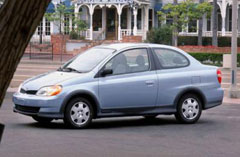
Toyota’s Echo
Toyota’s Echo, released in 1999, was Toyota’s replacement for the uninspiring Starlet. With its low price and a persona that was at least a little different from the pack, the Echo appealed to younger, often first-time car buyers and became a top seller within months of its release. The roomy but bizarre looking Echo, available in 2 and 4-door formats, had a relatively short life, being replaced in 2003 by the Yaris.
